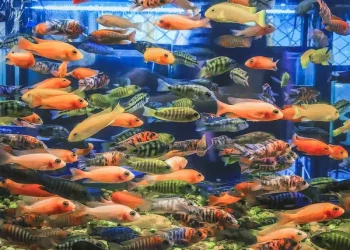Lungfish are an ancient type of fish that have been around for over 400 million years. They are known for their unique ability to breathe air, which makes them more closely related to land-dwelling creatures than other fish. While humans and lungfish may seem like vastly different creatures, there are actually some surprising similarities between the two.
One of the most striking similarities between humans and lungfish is our respiratory systems. While humans rely solely on our lungs to breathe, lungfish have both gills and a specialized swim bladder that functions as a primitive lung. This allows them to extract oxygen from the air when the water they live in is low in oxygen. Similarly, humans have a backup system for breathing when our lungs are compromised, such as when we hold our breath or suffer from lung-related diseases.
Another fascinating similarity between humans and lungfish is our ability to regulate our body temperature. While most fish are cold-blooded, meaning their body temperature is regulated by the environment around them, lungfish are one of the few species of fish that can regulate their own body temperature. Humans, of course, are warm-blooded, meaning our body temperature is regulated internally.
Additionally, both humans and lungfish have a relatively long lifespan compared to other animals of similar size. The Australian lungfish, for example, can live up to 100 years, while humans can live well into our 80s and 90s. This may be due in part to the fact that both species have relatively slow metabolic rates, meaning we use energy more efficiently than many other animals.
Another similarity between humans and lungfish is our ability to adapt to changing environments. While humans are known for our ability to innovate and create technology to help us thrive in a wide variety of environments, lungfish have evolved over millions of years to survive in environments that are often hostile to other fish. For example, some species of lungfish can survive in stagnant pools of water that are low in oxygen, and can even survive out of water for several months at a time by burrowing into the mud.
Finally, both humans and lungfish are social creatures that rely on community to thrive. While humans form complex social structures and rely on interpersonal relationships for our mental and emotional wellbeing, lungfish have been observed to form social hierarchies and even engage in group migrations.
In conclusion, while humans and lungfish may seem like vastly different creatures, there are actually many surprising similarities between the two. From our respiratory systems to our ability to adapt to changing environments, it is clear that humans and lungfish have more in common than one might expect. As we continue to study these fascinating creatures, we may even learn more about our own biology and evolution as a species.


























